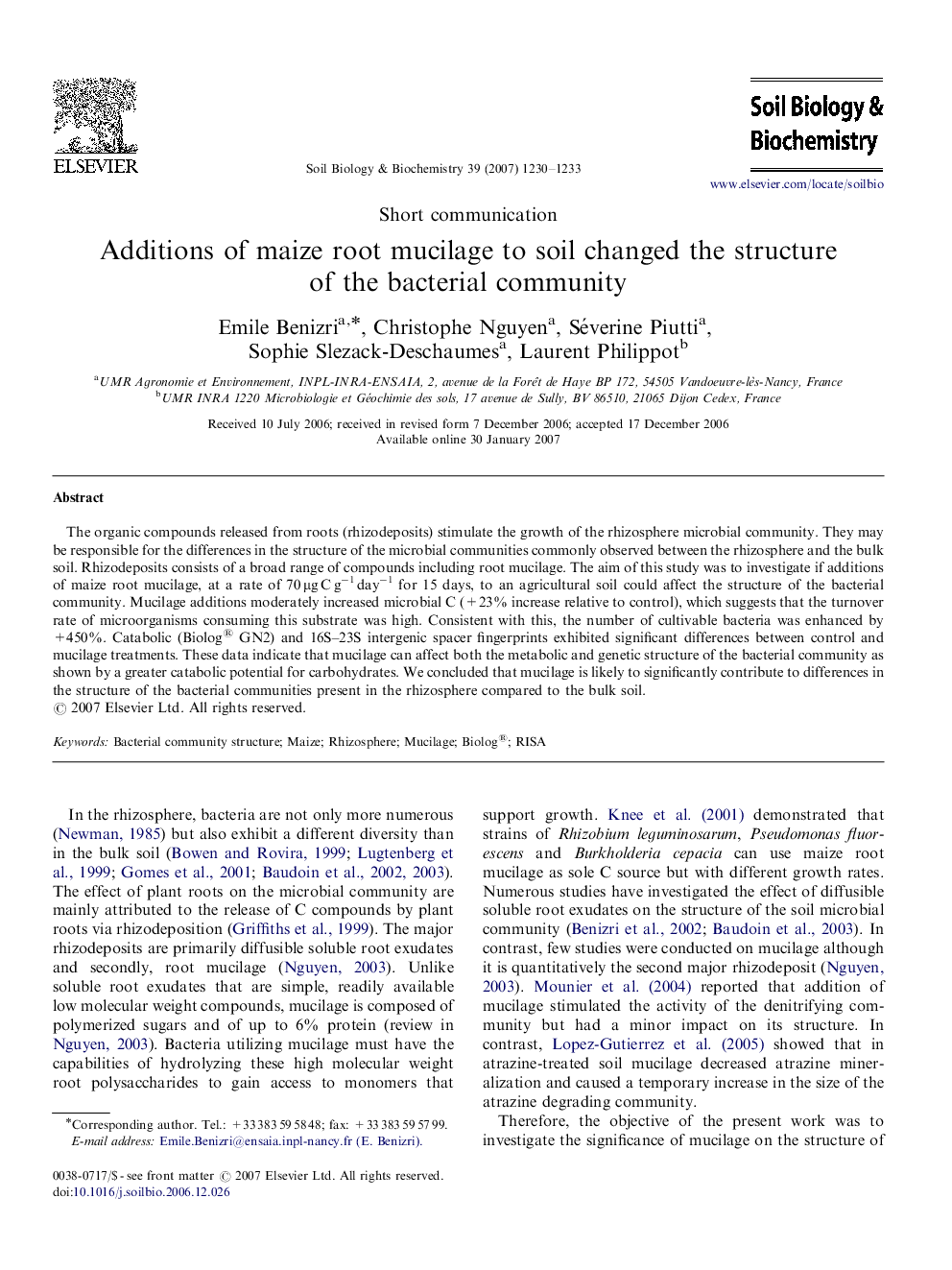| Article ID | Journal | Published Year | Pages | File Type |
|---|---|---|---|---|
| 2026433 | Soil Biology and Biochemistry | 2007 | 4 Pages |
The organic compounds released from roots (rhizodeposits) stimulate the growth of the rhizosphere microbial community. They may be responsible for the differences in the structure of the microbial communities commonly observed between the rhizosphere and the bulk soil. Rhizodeposits consists of a broad range of compounds including root mucilage. The aim of this study was to investigate if additions of maize root mucilage, at a rate of 70 μg C g−1 day−1 for 15 days, to an agricultural soil could affect the structure of the bacterial community. Mucilage additions moderately increased microbial C (+23% increase relative to control), which suggests that the turnover rate of microorganisms consuming this substrate was high. Consistent with this, the number of cultivable bacteria was enhanced by +450%. Catabolic (Biolog® GN2) and 16S–23S intergenic spacer fingerprints exhibited significant differences between control and mucilage treatments. These data indicate that mucilage can affect both the metabolic and genetic structure of the bacterial community as shown by a greater catabolic potential for carbohydrates. We concluded that mucilage is likely to significantly contribute to differences in the structure of the bacterial communities present in the rhizosphere compared to the bulk soil.
